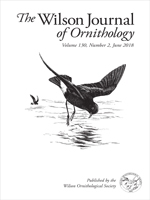Sources of measurement error using analog thickness gauges include differences in eggshell thickness at the points of measurement, imperfections in the micrometer within the limits specified by the manufacturer, imperfections or contamination of the eggshells, and human error in applying and reading the (analog) instrument. The errors due to using a mechanical instrument can be avoided by using an instrument such as the Magna-Mike 8600 or the MiniTest 7200 FH Hall-effect thickness gauges (HETG), which perform nondestructive measurements of non-ferrous materials by precisely measuring the distance between a small steel reference ball (min 1.59 mm) and a magnetic probe. The difference corresponds to the thickness of the eggshell and membrane (if present) to the nearest 0.001 mm and provides a precise and accurate digital measurement. Measurements at the equator of eggs using the HETG were similar to measurements using the Starrett thickness gauge (i.e., correlation coefficient = 0.946) measuring the same parts of the eggshells but generally measured 0–9% thicker, and overall variation in measurements was similar (coefficient of variation for 750 measurements of 150 eggshells was 15.5% using the HETG and 16.3% using the Starrett). When HETG measurements were compared to literature-reported pre-DDT-era eggshells of Clapper Rails (Rallus longirostris) and Forster's Terns (Sterna forsteri), the HETG measurements were about 12% thicker. Measurements thinner than published values may be due to measurements taken from museum eggshells, which are usually blown-out eggs, so only a small area around or across from the blow-out hole was measured with the analog gauges, whereas the entire eggshell thickness around the equator was measured using the HETG. Each eggshell was measured twice with a Starrett and HETG (using slightly different methods) to determine which measurement provides the most precise, and therefore most repeatable, measurement. I found the HETG to be a useful device that provides accurate and precise measurements without many of the measurement errors of analog mechanical devices, and it can also measure smaller more fragile eggs without damage to the eggshells.
How to translate text using browser tools
1 June 2018
A new nondestructive method for measuring eggshell thickness using a non-ferrous material thickness gauge
Gary M. Santolo
ACCESS THE FULL ARTICLE

The Wilson Journal of Ornithology
Vol. 130 • No. 2
June 2018
Vol. 130 • No. 2
June 2018
DDT, eggshell measurement
eggshell thickness
Hall Effect
organochlorine
thickness gauge




